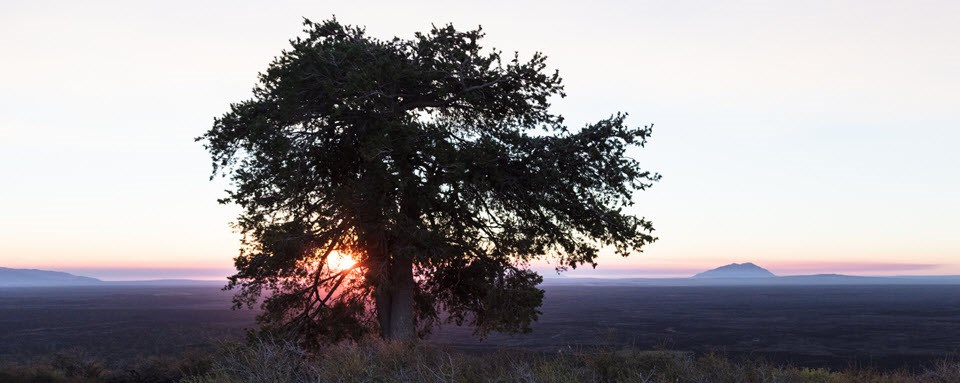
NPS Photo
Importance and Issues
Throughout the West, limber pine is suffering extensive, heavy mortality due to white-pine blister rust, an invasive exotic fungal disease. Blister rust causes tree cankers that often halt cone production and, in many cases, kill the tree. Limber pine is important to the biodiversity of Craters of the Moon National Monument and Preserve (CRMO) and limber pine woodlands are integral to the park's striking landscape.
Blister rust infection was first documented in CRMO in 2006, and infection has persisted in a few trees in the northern edge of the park. To date the disease does not appear to have spread south into the sparse pine woodlands that occur across the vast lava flows in the Preserve.
A changing climate is expected to further stress limber pine populations, and may accelerate rates of blister rust infection and other diseases, including limber pine mistletoe and mountain pine beetles. A closely related species, whitebark pine, is being considered for protection under the US Endangered Species Act due to the interactions of blister rust, pine beetle, and climate change.
Monitoring blister rust infection in limber pine populations will contribute to our understanding of landscape- and stand-level changes, as well as allow researchers to detect trend data needed to assess current outbreak status and develop a management response to blister rust infection and mountain pine beetle outbreaks. This monitoring will also add to the region-wide investigations into high-elevation five-needle pine (such as whitebark and foxtail pines) disease and population dynamics.
Because the limber pine population at CRMO is occurring at the very edge of its physiological tolerance, it represents an important "peripheral" population that may preserve valuable genetic diversity and will provide unique insights into how the species may respond to accelerated climate change.
Monitoring Objectives
Determine the status and trend in the following aspects of CRMO limber pine communities:
-
Tree species composition and structure
-
Tree species birth, death, and growth rates
-
Incidence of white pine blister rust (Cronartium ribicola) and level of crown kill
-
Incidence of pine beetle (Dendroctonus spp.) and severity of tree damage
-
Incidence of dwarf mistletoe (Arceuthobium spp.) and severity of tree damage
-
Cone production of white pine species
Source: NPS DataStore Saved Search 737. To search for additional information, visit the NPS DataStore.
Source: NPS DataStore Saved Search 718. To search for additional information, visit the NPS DataStore.
Source: NPS DataStore Saved Search 879. To search for additional information, visit the NPS DataStore.
Last updated: August 29, 2018
